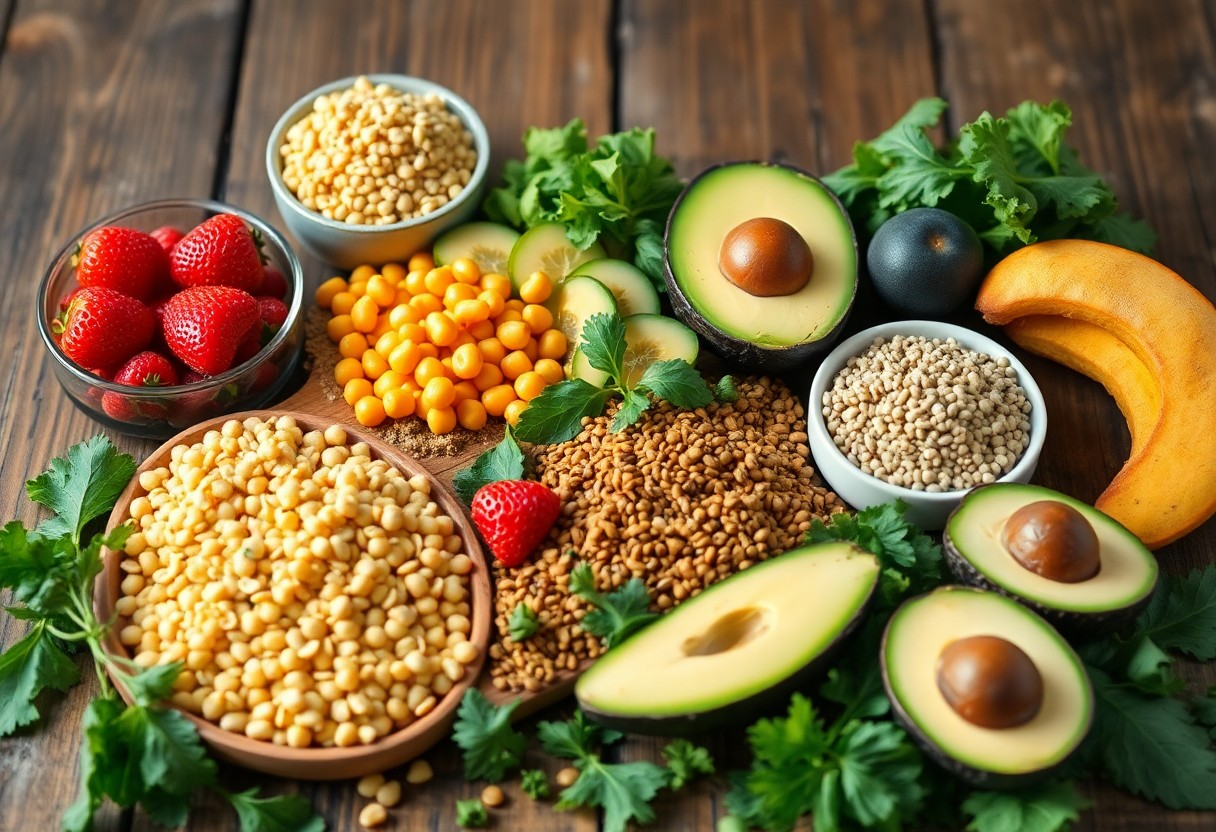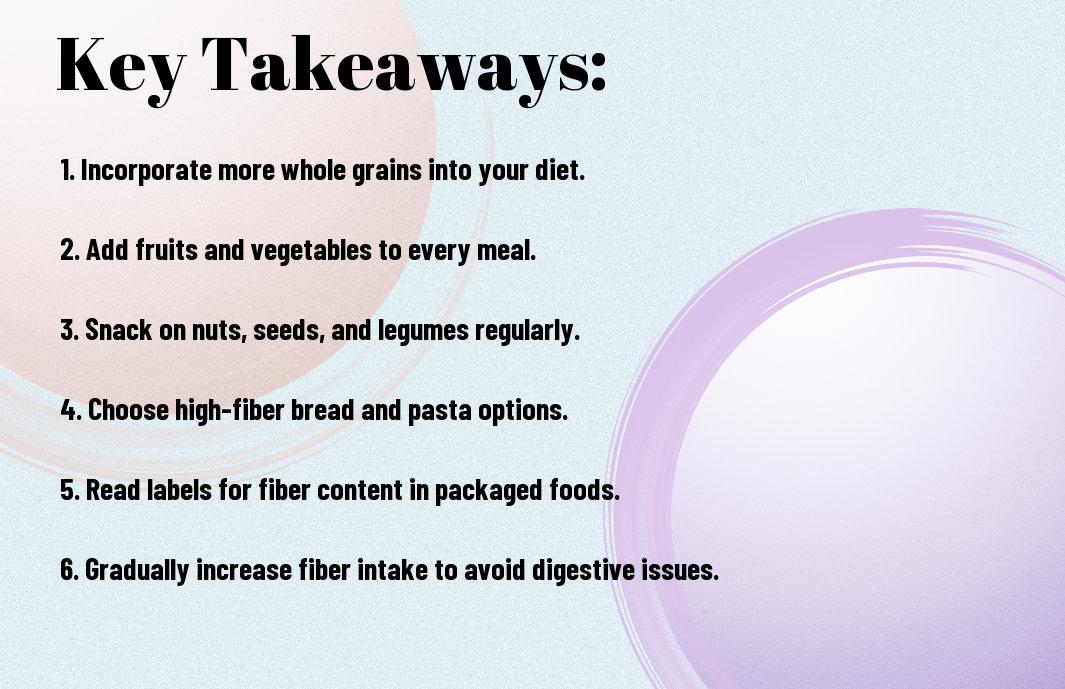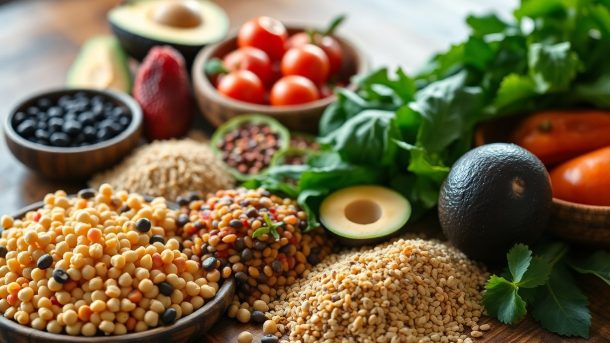Health experts agree that increasing your fiber intake can significantly improve your digestive health and overall well-being. In this post, you will discover effective strategies to boost your fiber consumption, from incorporating specific foods to making simple dietary changes. Whether you aim to enhance your gut health, manage your weight, or simply feel more energized, understanding how to elevate your fiber levels is vital. Join us as we explore practical tips and delicious options to enrich your diet with fiber, ensuring you meet your nutritional goals.
Key Takeaways:
- Incorporate More Whole Grains: Choose whole grain options like brown rice, quinoa, and whole wheat bread to significantly increase your fibre intake.
- Increase Fruits and Vegetables: Aim for a variety of fruits and vegetables in your diet, as they are rich sources of both soluble and insoluble fibre.
- Snack on Nuts and Seeds: Opt for nuts and seeds as healthy snacks, as they provide a good amount of fibre along with healthy fats and proteins.

Understanding Dietary Fibre
Before you can boost your fibre intake, it’s imperative to understand what dietary fibre is. It is a plant-based carbohydrate that your body cannot digest. It plays a vital role in your digestive health and can be found in various foods. For more information on Dietary fibre, you’ll discover various sources and their benefits.
Types of Dietary Fibre
Understanding the different types of dietary fibre can help you choose the right foods. There are two main categories:
- Soluble Fibre: Dissolves in water and helps lower blood cholesterol.
- Insoluble Fibre: Promotes regular bowel movements and improves digestive health.
Thou can enhance your diet by incorporating both types of fibre from various sources.
| Type of Fibre | Sources |
|---|---|
| Soluble Fibre | Oats, lentils, fruits |
| Insoluble Fibre | Whole grains, nuts, vegetables |
| Fermentable Fibre | Chicory root, garlic, onions |
| Non-Fermentable Fibre | Vegetables, wheat bran |
| Functional Fibre | Supplements, food additives |
Health Benefits of Fibre
Beside digestive health, fibre offers numerous benefits that you should be aware of. It can help manage your weight, improve cholesterol levels, and lower the risk of developing chronic diseases such as diabetes and heart disease.
Also, increasing your fibre intake can aid in achieving proper bowel function, making you feel fuller longer. Additionally, it may assist in controlling your blood sugar levels, providing you with sustained energy throughout the day. Focus on integrating a variety of fibre-rich foods into your meals to experience these health benefits.

Assessing Your Current Fibre Intake
Even if you feel you’re eating healthy, it’s crucial to evaluate your current fibre intake. Start by tracking the foods you consume over a week to get an accurate picture of your diet. This will help you identify where you might be falling short of your fibre goals and what adjustments are needed for improvement.
Daily Recommendations
Assessing your fibre intake is easier once you know the daily recommendations. Generally, women should aim for about 25 grams of fibre per day, while men should target around 38 grams. These numbers can vary based on age and individual health goals, so it’s important to tailor your intake accordingly.
Common Sources of Fibre
To effectively boost your fibre, you should familiarize yourself with common sources. Foods high in dietary fibre include fruits, vegetables, whole grains, legumes, and nuts. Incorporating these foods into your meals can significantly improve your overall fibre levels.
In fact, adding just a few servings of these fibre-rich foods to your daily routine can have a profound impact. For instance, a cup of cooked lentils contains about 15.6 grams of fibre, while an apple with the skin provides around 4.4 grams. By consciously including more of these foods in your meals—like adding beans to salads, choosing whole grain bread, or snacking on fresh fruits—you can easily meet and even exceed your fibre goals.
Strategies to Increase Your Fibre Intake
Not only can increasing your fibre intake lead to better digestive health, but it can also support weight management and enhance overall wellness. To boost your fibre, consider various practical strategies. Start by gradually incorporating high-fibre foods into your meals and snacks. Focus on making swaps, such as choosing whole grains over refined grains, and ensure that each meal contains a good variety of fruits and vegetables.
Incorporating Whole Grains
On a daily basis, opt for whole grain options like brown rice, quinoa, and whole wheat bread instead of their refined counterparts. These choices are higher in fibre and will help you to increase your fibre intake effortlessly. Even snacks can be adjusted; for example, choose whole grain crackers or granola to satisfy your cravings while benefiting your diet.
Adding Fruits and Vegetables
To enhance your fibre consumption further, focus on adding more fruits and vegetables to your meals. Fresh and frozen options alike can provide necessary nutrients and are packed with fibre, making them a fantastic addition to your daily intake. Incorporate colourful produce into salads, smoothies, and side dishes to maintain variety and flavor while maximizing your health benefits.
This approach not only makes your meals more enjoyable but also ensures that you are reaping the rewards of a high-fibre diet. Fruits like apples, pears, and berries, along with vegetables such as broccoli, carrots, and leafy greens, can significantly contribute to your daily fibre goals. Aim to fill half of your plate with these foods at every meal to create a balanced, fibre-rich diet.
The Role of Legumes and Nuts
For those looking to increase their fiber intake, legumes and nuts play a significant role. These nutrient-dense foods not only provide ample amounts of fiber but also offer various additional health benefits. Integrating them into your daily meals can help you achieve better digestion, maintain a healthy weight, and improve overall health.
Types of Legumes to Include
An effective way to boost your fiber is through the inclusion of various legumes in your diet. Here’s a table of legumes you might consider:
| Legume Type | Fiber (per cup cooked) |
| Chickpeas | 12.5g |
| Lentils | 15.6g |
| Black Beans | 15g |
| Kidney Beans | 13.1g |
| Edamame | 8g |
Any of these legumes can be easily added to your salads, soups, or main dishes for a wholesome fiber boost.
Health Benefits of Nuts and Seeds
Legumes and nuts are not just fiber-rich; they also provide a host of health benefits. Regular consumption of nuts and seeds can enhance heart health, as they are packed with healthy fats and antioxidants. Additionally, these foods can help you manage your weight due to their satiating nature, making you feel fuller for longer.
It is important to recognize the myriad of health benefits associated with nuts and seeds. These nutrient powerhouses are rich in protein, vitamins, and minerals, which can support muscle development, improve cognitive function, and reduce inflammation. Including a variety of nuts and seeds in your diet can be a simple yet effective way to boost your overall health while adding delightful flavors and textures to your meals.
Tips for Making Healthy Choices
All you need is a few adjustments to boost your fiber intake effectively. Here are some tips to help you get started:
- Choose whole grains over refined grains.
- Add legumes like beans and lentils to your meals.
- Incorporate fresh fruits and vegetables into every meal.
- Snack on nuts and seeds instead of processed snacks.
- Gradually increase your fiber intake to avoid discomfort.
Perceiving fiber as an vital part of your diet can lead to improved health and well-being.
Reading Food Labels
Along your journey to boost fiber, understanding food labels plays a significant role. Look for products that contain at least 3 grams of fiber per serving and compare options to find the highest fiber content. Ingredients like whole grains, vegetables, fruits, nuts, and seeds can signal a higher fiber product. Make it a habit to scrutinize the nutritional information and aim for those choices that align with your dietary goals.
Meal Planning for Higher Fibre
Making informed decisions about meal planning can significantly elevate your fiber intake. Choose recipes that include fiber-rich ingredients and prepare meals in advance to avoid last-minute unhealthy choices.
Tips for effective meal planning include incorporating a variety of high-fiber foods like whole grains, beans, fruits, and vegetables into your weekly menu. Consider preparing large batches of meals that can be easily reheated, ensuring you have healthy options readily available. By introducing fiber-rich ingredients into your favorite dishes and trying new recipes, you make gradual but lasting changes to your diet.
Common Challenges and Solutions
Now, you may encounter some challenges when trying to boost your fibre intake, but there are effective solutions to help you overcome them. Whether it’s digestive discomfort or reluctance to incorporate certain foods into your diet, understanding these hurdles will empower you to make better choices and successfully increase your fibre consumption.
Dealing with Digestive Discomfort
With an increase in fibre, your body may initially respond with digestive discomfort such as bloating or gas. To ease this transition, gradually raise your fibre intake over several days while ensuring you drink plenty of water. This will allow your digestive system to adjust, making it easier for your body to handle the increased fibre without distress.
Overcoming Taste Preferences
Beside digestive challenges, you might struggle with integrating high-fibre foods due to your taste preferences. Many people find the taste or texture of certain whole grains, legumes, or fruits unappealing. This can lead to a reluctance to consume these nutrient-rich options.
Considering your taste preferences is vital when planning to boost your fibre intake. Explore various cooking methods and pair high-fibre foods with your favorite flavors. For instance, try adding spices or herbs to legumes, or incorporating fruits into smoothies to mask their texture. Experiment with different foods until you find delicious combinations that keep you excited about including more fibre in your daily meals.
Summing up
Now, to boost your fiber intake, focus on incorporating a variety of fiber-rich foods into your daily diet. Opt for whole grains, legumes, fruits, and vegetables, as they will enhance your fiber levels effectively. Consider adding nuts and seeds for extra nutrition and try to gradually increase your fiber consumption to avoid digestive discomfort. Stay hydrated by drinking plenty of water, which helps fiber do its job. Lastly, explore new recipes that include these ingredients to make your meals enjoyable while promoting better digestive health.
FAQ
Q: What are the best food sources to increase my fiber intake?
A: To boost your fiber intake, consider including a variety of foods in your diet. Some excellent sources of fiber include fruits like apples, bananas, and berries; vegetables such as broccoli, carrots, and leafy greens; whole grains like oats, quinoa, and brown rice; legumes including lentils, chickpeas, and black beans; and nuts and seeds such as almonds and chia seeds. Incorporating these foods into your meals and snacks can significantly enhance your fiber consumption.
Q: How much fiber should I aim to consume daily?
A: The recommended daily intake of fiber varies by age and gender. For adult women, it’s typically about 25 grams per day, while men are advised to aim for around 38 grams. It’s a good idea to assess your current fiber intake and gradually increase it to meet these guidelines, as sudden changes can cause digestive discomfort.
Q: Are there any benefits to increasing my fiber intake?
A: Yes, increasing fiber intake can offer numerous health benefits. High fiber diets can promote digestive health, reduce the risk of chronic diseases such as heart disease and diabetes, aid in weight management by increasing feelings of fullness, and help regulate blood sugar levels. These benefits can contribute to overall health and well-being.
Q: How can I incorporate more fiber into my meals without feeling bloated?
A: To integrate more fiber into your meals and reduce the chance of bloating, it’s advisable to make gradual changes. Start by adding small portions of high-fiber foods to your diet and gradually increase these servings. Drinking plenty of water alongside high-fiber foods is also helpful, as it aids in digestion and minimizes discomfort. Cooking legumes and grains thoroughly may also ease their digestibility.
Q: Should I consider taking fiber supplements instead of getting fiber from food?
A: While fiber supplements can be a convenient option for some, it’s generally best to obtain your fiber from whole foods. Whole foods provide additional nutrients, vitamins, and minerals that supplements may lack. If you feel that you can’t meet your fiber needs through food alone, consult with a healthcare provider or registered dietitian to determine the best approach for adding fiber to your diet.



